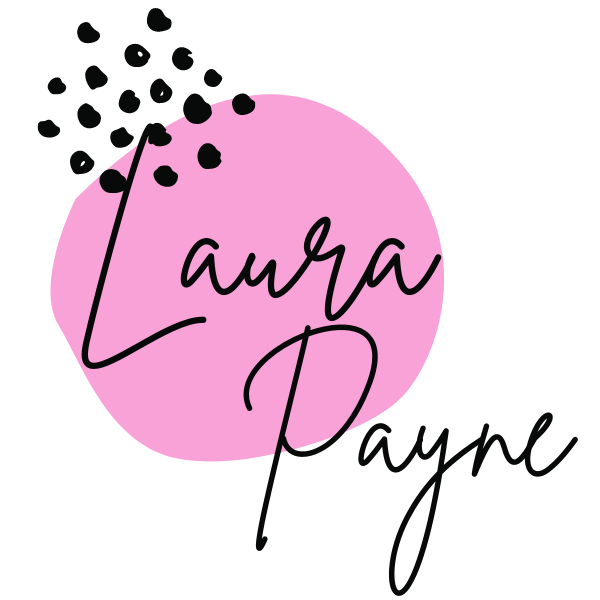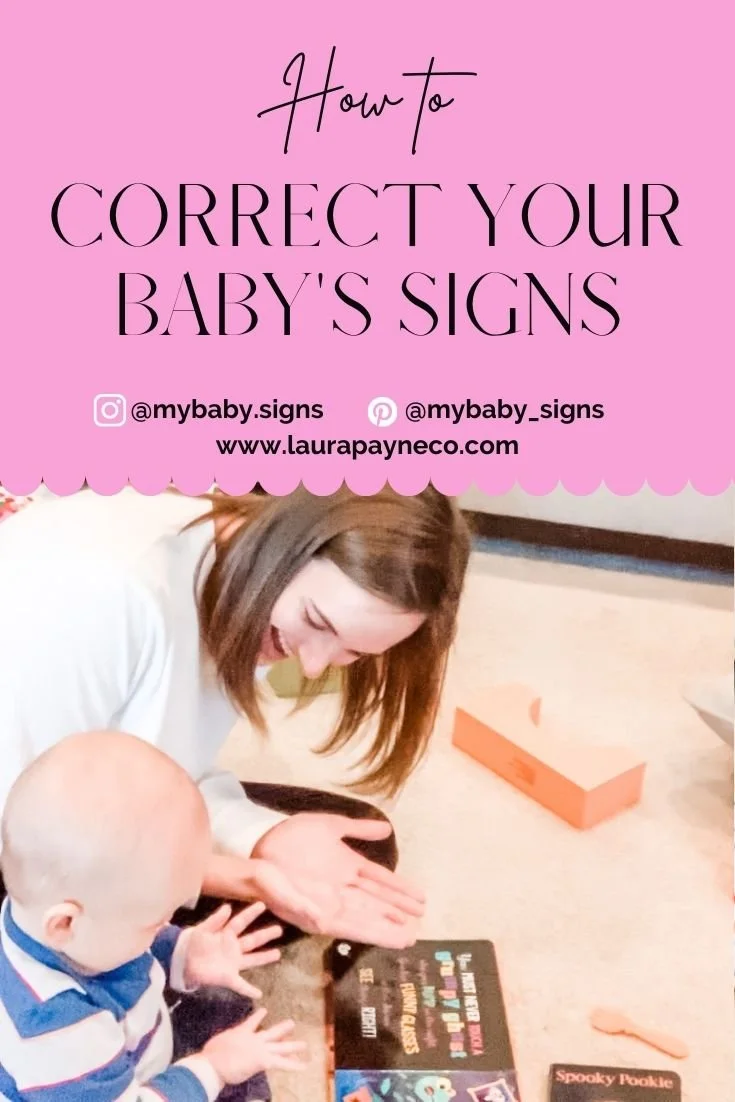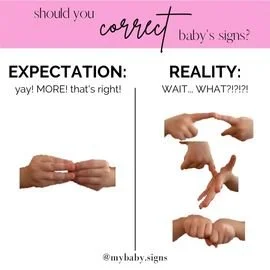Sign Language for Babies: How To Correct Your Baby’s Signs
Picture this: your baby starts using sign language and you quickly go from celebrating to questioning because their sign doesn’t look right. Is this normal? Do you correct it? Do you need to simplify these signs because they’re actually too complicated for baby?
I’m going to break down each of these questions for you in this blog post but here’s what you should know up front: your baby is SIGNING!!! Do your little happy dance and shout it from the roof tops!
If you don’t already, please follow me on Instagram for more about how sign language can be a game charger for your baby / toddler’s early communication skills.
Is it normal for your baby to use signs incorrectly?
Just like with spoken words, your little one’s signs will not necessarily look like your signs. And that is A-OKAY! Consider your baby’s first words. These are approximations of the word: “BA” for ball, “MA” for mama, etc. These are expected and appropriate for language development.
Apply this to sign language development. Your baby is doing the exact same thing!
Do you correct your baby’s signs?
Remember that happy dance and roof top shouting I told you to do at the beginning? Rather than correcting baby’s signs (remember, this is part of language development) I want you to:
Encourage, praise, and support your baby! You have been working so hard on sign language, and the communication is now happening! Give them what they are communicating, be excited, show them how proud you are, and cover them in kisses.
Continue to sign the correct model. While baby is signing their developmental-appropriate approximation, you are still providing that rich language model for them. Just like you do when they say “BA” for ball, you say “Yes, that is a ball.”
Expect for the approximation to evolve. Over time, as your baby gets older, their sign will begin to morph and get closer to the correct sign. Their fine motor skills become more developed, they are able to isolate fingers and movements, and have better spatial awareness as well. Just like their words become more clear and fine tuned, their signs will as well.
Do you need to simplify sign language for your baby?
Nope! This is a common myth.
Think about spoken language for a second. You model full, complicated words to your baby all day long. You don’t have a set of words that you simplify for baby until they can say them. You use your language in its entirety, knowing your baby will approximate “BA” for ball (for example).
Do the same with sign language for early communication.
(See #2 and #3 above.)
Want to use sign language with your little one?
Get Started Now with 10 functional ASL signs to start using with your baby or toddler right away. Learn 3 tips to ensure you are using signs correctly and with realistic expectations. Whether you have already started signing, or just warming up to the idea, this free guide will take you one step closer to your goal!
Look Who’s Signing Now is my signature four part course that teaches you the exact blueprint I use to teach my own children sign language. Beginning with the foundation of why and when to use baby sign language, how to implement it, and what signs to use. With this self-study e-course, you will have the confidence to sign with your baby and boost their early communication while reducing frustrations, tantrums, and time wasted playing the guessing game.
Check out my online resources for parents! Browse my current offerings.



